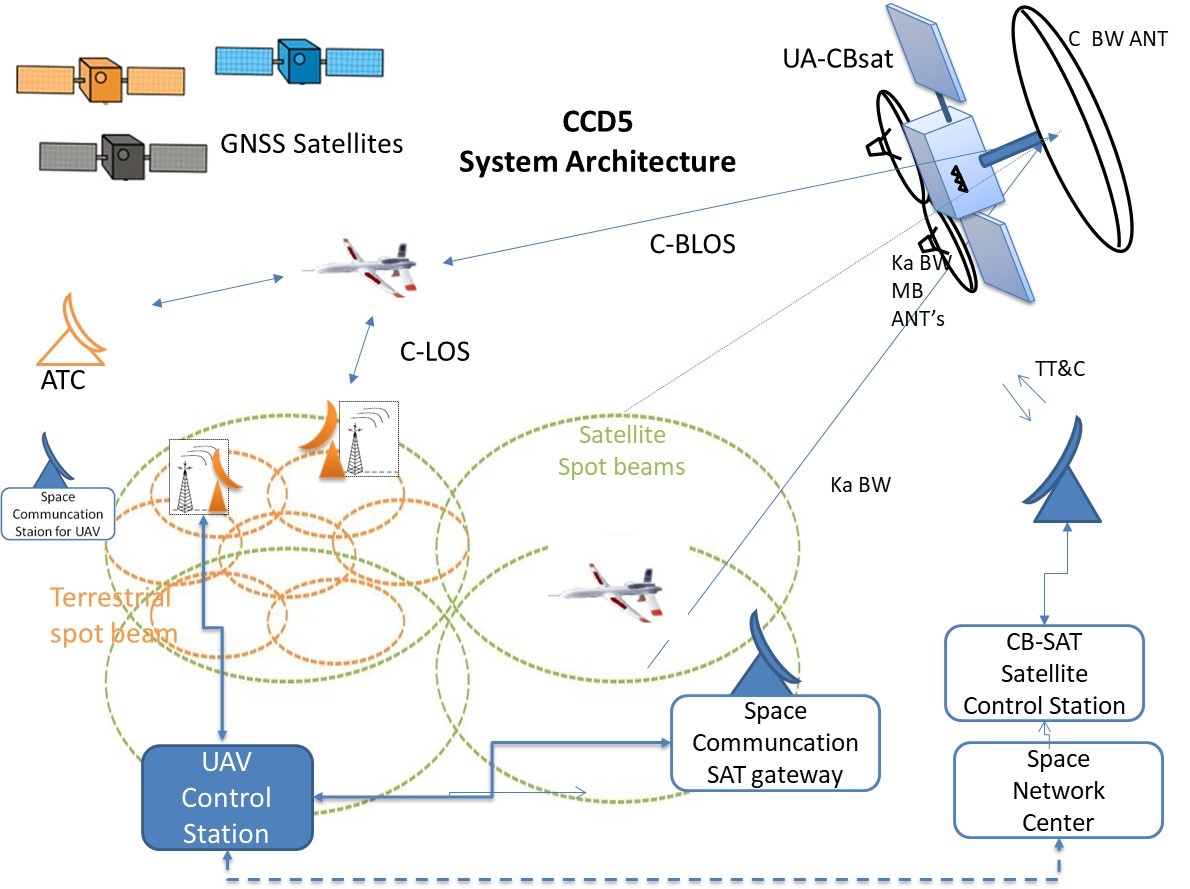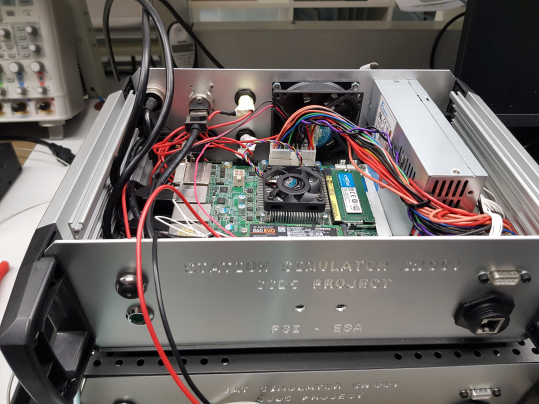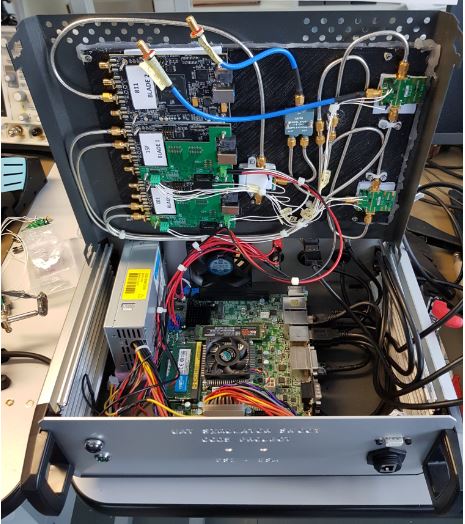
-
StatusCompleted
-
Status date2020-03-18
-
Activity Code3A.062
- Verify interference compatibility among services (in particular AMS (R) S compatibility MLS)
- Verify simultaneous communications capability for Ground-Space for CNPC (C2/C3)
- Identify and demonstrate ground/space service (BW) sharing mechanism and its effectiveness/complementarity
- Design a suitable waveform or set of waveforms for the service
- Manage Space & Ground links diversity (dynamic, link models, etc.)
- Identify an overall system design including satellite, ground stations and RPAS User Terminal
To support future development of UAV/RPAS communication scenario by identifying potential solutions and criticalities of future implementations.
LOS and BLOS links will be operated in combination in order to provide higher level of performances and capability to the UAV controllers.
To identify a feasible system design with suitable waveforms that are capable to operate in TDD (Time Division Duplex) or HFDD (Half Frequency Division Duplex) conditions.
Prototype of UAV terminal is capable of:
- Demonstrate system design feasibility.
- Waveform design capability to adapt to combined ground and space operations
The CCD5 project is one of the first attempts ever done to design an integrated ground and space communication system since the conception phase.
The availability of the C band in the 5030-5091 frequency BW represent a unique opportunity to assess protocols and technologies to exploit space and ground communication compatibility, complementary and sharing of components.
The basic system architecture is the following:

The space segment is based on a GEO satellite that has been selected because of its effectiveness when the application is Regional (ECAC) as for this study case. A constellation of small satellites at LEO might be an alternative solution more expensive but with advantages in terms of latency time and link budgets.
The overall duration of the program is 18 months. The program consists of 2 phases.
The phase 1 consists in the revisit of the ESA ESPRIT ARTES 1 Study, the definition of a baseline scenario and a preliminary system design in order to establish the system, link performance and link security requirements. The mechanism for sharing the available spectrum between the line-of-sight (terrestrial) and the beyond-line-of-sight (satellite) links and the joint BLoS/LoS waveform is designed and validated in a simulation environment.
The phase 2 consists in a detailed design, implementation and testing of the modem prototype. Technological and regulator roadmap is provided for a proposed waveform standardized.
The following milestones have been considered:
- SRR - System Requirement Review,
- AIR Interface Review,
- PDR Preliminary Design Review, at the completion of prototype implementation;
- AR/FP - Acceptance Review and a Final Presentation, at the end of the activities.
Prototype
The prototype realized was composed by a station simulator (replicating the terrestrial and the satellite segment functions) and a UAT simulator (replicating the UAV transceiver functions). Pictures from the prototype are shown.
 |
 |
 |
| Station and UAT Simulator | Station Simulator | UAT Simulator |
The program started at the end of 2017 and the activities are completed




